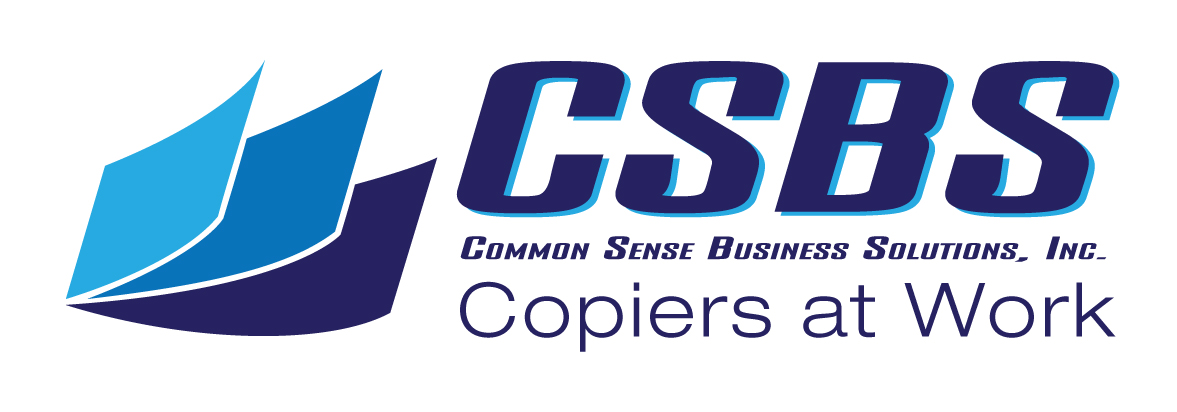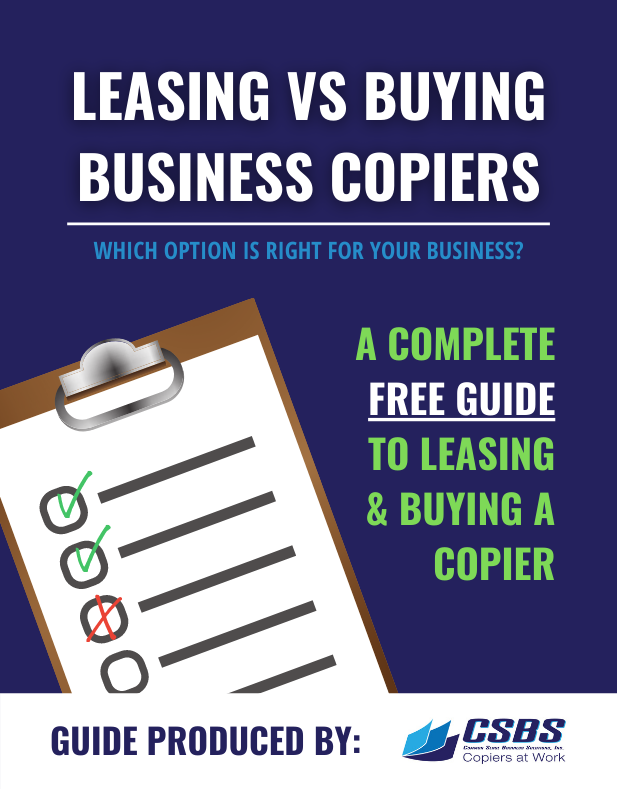Small business copiers can easily become one of the most expensive items maintained by your business. When you factor in the initial purchase price, maintenance fees, and the expense of ink and paper, it’s easy to see how the costs add up. However, small business copiers are also an indispensable component of business operations. This means that reducing costs associated with your copier is the best way to stay within your budget while keeping your daily operation running smoothly.
Choose the right model
 There are great copiers on the market and you may be tempted to purchase one with all the bells and whistles, such as the Konica Minolta Bizhub C554. While this may be a great choice for some offices, others may be perfectly happy with a more streamline model, like the Konica Minolta Bizhub 284. The best way to choose between the different models of small business copiers is to do an assessment of your office’s needs. Make sure you know the volume of printing your office needs to accomplish on a daily basis. If your employees are routinely printing hundreds of pages, a quick, high-volume machine will be necessary. However, if your office prints mainly receipts or letters, a more economical device could do the trick. Other things to consider are the number of people using the copier, the types of projects you need to print, and whether leased or pre-owned small business copiers are viable options. If you’re struggling to decide, contact your local copier company and ask for a professional to help you design the perfect copier system.
There are great copiers on the market and you may be tempted to purchase one with all the bells and whistles, such as the Konica Minolta Bizhub C554. While this may be a great choice for some offices, others may be perfectly happy with a more streamline model, like the Konica Minolta Bizhub 284. The best way to choose between the different models of small business copiers is to do an assessment of your office’s needs. Make sure you know the volume of printing your office needs to accomplish on a daily basis. If your employees are routinely printing hundreds of pages, a quick, high-volume machine will be necessary. However, if your office prints mainly receipts or letters, a more economical device could do the trick. Other things to consider are the number of people using the copier, the types of projects you need to print, and whether leased or pre-owned small business copiers are viable options. If you’re struggling to decide, contact your local copier company and ask for a professional to help you design the perfect copier system.
Color with caution
The cost of toner is a major expense across the life of small business copiers and color toner is significantly more expensive than basic black. Before you choose small business copiers that print in color, it’s worth considering whether you really need this feature. Color documents are more eye-catching and can make it easier to understand things like graphs or charts printed as part of financial reports. Additionally, if your company routinely prints photographs, marketing material, or other graphic designs, a color copier is a must. However, basic black and white documents can still be incredibly effective and save you a ton of money. Charts and graphs can easily be designed in grayscale. On the rare occasion when you absolutely need a color document, it may be more cost effective to have those documents printed at a local print shop.
Budget printer usage
Once you’ve selected the most cost effective small business copiers for your office, it can be helpful to budget the number of copies made by your employees. Konica Minolta Bizhub copiers make it easy for you to track how much is being printed each month. This works by allowing you to assign a code to each employee, department, or project. At the end of the month, you can run a report that allows you to see where the most printing is taking place and even assign dollar amounts based on department or project. You can further use these codes to give certain departments permission to use certain functions. You may allow your billing department to print only in black and white, but allow your art department to print in full color. These great features allow you to have a high level of control and to identify and correct areas where waste is occurring.
Small business copiers are an expensive, yet necessary aspect of conducting business. By choosing the right model of copier, being thoughtful about color copying, and budgeting copier usage, you can reduce the operating costs of small business copiers.
FAQ Section: Optimizing Small Business Copier Usage
1. What are the most cost-effective copiers for small businesses?
Choosing the right copier for your small business can significantly impact your budget. Look for models like the Konica Minolta Bizhub 284 if your printing needs are moderate. This machine offers efficiency without the extra frills, keeping costs low. For higher volume, the Bizhub C554 might be better, but consider whether you really need all the features. Balancing your business’s needs with the copier’s capabilities is key to cost efficiency.
2. How can I reduce printing costs in my small business?
One effective way to reduce printing costs is by monitoring your copier usage closely. Utilize tracking features that allow you to assign codes to departments or employees, as seen in Konica Minolta Bizhub copiers. This lets you generate reports on monthly usage and identify where excesses occur. Additionally, switching to black-and-white printing for routine documents can save significant money on color toner.
3. Is color printing necessary for my small business?
Color printing can enhance your documents but comes at a higher cost. It’s essential to evaluate whether color is necessary for your business. If you regularly print marketing materials or visual content, color printing is indispensable. However, for day-to-day documents, black-and-white printing suffices and is far more economical. You might consider outsourcing the few color jobs to a local print shop to save on toner.
4. How do I choose between leasing or buying a small business copier?
Deciding between leasing or buying a copier depends on your budget and business needs. Leasing can offer lower upfront costs and include maintenance, making it ideal for businesses with tight cash flow. However, buying might be more cost-effective long-term, especially if you plan to use the copier for many years. Analyze your budget and consider how quickly technology changes in your industry.
5. What should I consider when buying a small business copier?
When selecting a copier, assess your daily print volume, the type of documents you produce, and the number of users. For high-volume environments, opt for a copier with fast print speeds and robust paper handling capabilities. For smaller offices, a more basic model might suffice. Also, consider whether you need additional features like scanning, faxing, or cloud storage integration.
6. How can I extend the lifespan of my small business copier?
Regular maintenance is crucial for extending the lifespan of your copier. Ensure you’re using the correct toner and paper types as recommended by the manufacturer. Scheduling periodic professional maintenance can prevent breakdowns. Additionally, encourage employees to handle the machine properly and report issues immediately to avoid further damage.
7. How can smart copiers benefit my small business?
Smart copiers, equipped with features like IoT sensors and remote monitoring, can streamline your business operations. These copiers offer advanced tracking and reporting, helping you manage and reduce costs. They can also integrate with your office’s IT systems, allowing for seamless document management and improved security. Over time, these smart features can lead to significant efficiency gains.
8. What are the environmental benefits of using a modern copier?
Modern copiers are designed with energy efficiency in mind. Features like smart climate control and LED lighting reduce power consumption. Additionally, many copiers now use recyclable materials and eco-friendly toners, reducing their environmental impact. By choosing a modern copier, your business can contribute to sustainability efforts while also saving on energy costs.
9. How do IoT sensors in copiers help improve office productivity?
IoT sensors in copiers can detect usage patterns and automate tasks, freeing up time for more critical activities. For example, they can automatically reorder supplies or notify maintenance teams before issues arise. This reduces downtime and keeps your office running smoothly. By streamlining these processes, your employees can focus on tasks that drive your business forward.
10. What are the security risks associated with wireless copiers?
While wireless copiers offer convenience, they also pose security risks if not properly managed. Ensure your copier is part of your office’s secure network and that data encryption is enabled. Regularly update the copier’s firmware to protect against vulnerabilities. Implement user authentication to control access, reducing the risk of unauthorized use or data breaches.




